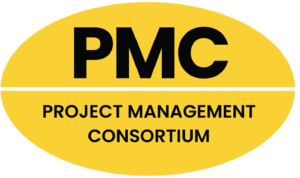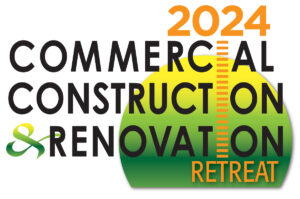All construction jobs come with some degree of risk, whether they’re indoors or outdoors. Both environments have different hazards that require a unique set of safety protocols and equipment. Let’s discuss the key differences between indoor and outdoor work environments and some of the best safety practices for each setting.
Common Construction Safety Hazards
Indoor and outdoor construction sites share many of the same types of safety hazards. These are the most common safety hazards that site managers must account for:
- Unstable surfaces: construction sites have many unstable surfaces and equipment that cause grease or residue buildups. Workers can also trip and fall over tools, vehicles, wires, and other miscellaneous objects.
- Equipment accidents: operating heavy machinery is always a risk. Workers can mishandle the vehicles and harm themselves, their co-workers, or the work site.
- Heights: Employees can fall from great heights when working on tall structures and using large equipment.
- Falling objects: objects fall from high places in construction often, whether it’s due to human error or unstable surfaces.
- Chemical exposure: sites using hazardous chemicals must be wary of leaks and spills.
- Electrocution: employees face many electrical hazards while using machines or handling live wires.
- Repetitive use injuries: long hours of manual labor cause worker fatigue which can lead to all kinds of injuries, from cuts and bruises to life-threatening health emergencies.
Overall, it’s easier for site managers to control an indoor setting and establish effective regulations. However, there are still some unique indoor safety hazards that can throw a wrench in their plans.
- Noise Pollution: although noise pollution can be a problem in outdoor settings, it’s much more common for indoor projects. The project’s sounds echo throughout the building and create a constant torrent of noise that workers can’t escape from.
- Carbon Monoxide: Carbon monoxide poisoning is always a threat in indoor workplaces, no matter the industry. It’s an odorless, colorless gas that causes unconsciousness in a matter of minutes.
- Insufficient Airflow: with many workers packed into the same confined space, indoor projects are prone to having insufficient airflow. Particulate matter fills the air and has nowhere to go. This uncomfortable environment can lead to worker fatigue or cause a health emergency.
- Fires: fires are much more dangerous with indoor projects because the flames can spread more easily and workers have fewer escape routes.
Outdoor projects are usually more dangerous than indoor projects because of one major factor: weather. Strong winds, heavy precipitation, and extreme temperatures can create numerous new safety hazards around the site. Frequent sunlight exposure can also lead to painful skin irritation and heightens the risk of dehydration and heat exhaustion.
Although the assortment of outdoor and indoor risks is similar, the two environments are still fundamentally different. Here are the best safety practices for each setting that industry professionals and entry-level employees alike should know.
Indoor Safety Practices – Electric Equipment Expanding
One of the main reasons indoor construction projects have such poor air quality is the equipment selection. Gas and diesel equipment emit exhaust fumes that fill up the workspace and get inhaled by workers all day. The National Cancer Institute has also found that diesel exhaust fumes have links to lung cancer when people face frequent exposure.
Gas and diesel machines are also uncomfortably loud and cause great stress to workers. To counteract these risks, many construction professionals have switched to electric equipment for their indoor projects. Electric equipment emits no exhaust and operates quietly all day, providing a much more tolerable work environment.
Implementing electronics would also reduce the risk of indoor fires and save workers from many hazardous substances:
- Carbon monoxide
- Hydrocarbons
- Nitrogen oxide
- Sulfur oxide
- Soot from excessive CO2 levels
Quiet work sites with decent air quality were unheard of in years past, but electric vehicles make it possible. Managers could install chargers around the building to allow for easy refueling – or in this case, recharging – to keep projects moving on schedule with minimal delays.
There could also be long-term benefits of switching to electric equipment. The construction industry is responsible for about 39% of carbon emissions worldwide. Battery-powered machinery could remove a significant chunk of that percentage and make construction much more sustainable. However, this technology isn’t the most practical option for every project.
Outdoor Safety Practices – Diesel Still Dominates
Although electric equipment gives indoor projects many advantages, it’s not the best fit for most outdoor projects. An EV’s battery performance can be highly sensitive to inclement weather, especially extreme temperatures. The battery range can plummet on a hot or cold day, delaying the project’s most essential tasks.
The machines don’t even have to be in use to experience battery degradation. They can deteriorate simply from sitting outside in extreme temperatures. Managers would have to pay much more for equipment storage to protect their new investments.
Additionally, the EV charging infrastructure is not yet strong enough to support the widespread adoption of electric construction equipment. Contractors with their own indoor spaces can add chargers as they please, but contractors for outdoor projects would have to rely on the closest available chargers.
The charger dilemma would pose different challenges in urban and rural areas. If a construction project relied on the city’s charging stations to power its electric equipment, it could prevent local EV owners from charging their vehicles. For rural projects, workers might have to drive many miles to reach the nearest charging station, costing precious time and fuel.
Outdoor projects also tend to be larger in scope. Nobody has tried using electric equipment to build skyscrapers, stadiums, commercial buildings, and apartment complexes before. It’s wiser to gather information and perfect the technology on a smaller scale before applying it to bigger projects.
Gas and diesel equipment are better fits for outdoor projects. Air quality and noise pollution are still important hazards, but they aren’t immediate threats to worker safety like they are indoors. There are easier ways to address these problems in outdoor projects, such as eye wear, earplugs, and industrial masks.
A Safe Worksite is a Successful Worksite
Worker safety is important in all industries, but it carries more weight in high-risk industries like construction. Using the best equipment available is a key part of creating a safe and successful workplace. Electric equipment can help revolutionize construction safety in the future, but for now, they’re best reserved for indoor projects. Traditional equipment still controls the outdoors.
Olivia Elsher is a Senior Writer & Editorial Manager at Renovated. She has 5+ years of expertise writing about construction and project management related topics.










 The 2024 virtual Men’s Round Table will be held Q4, 2024, date TBD.
The 2024 virtual Men’s Round Table will be held Q4, 2024, date TBD.













